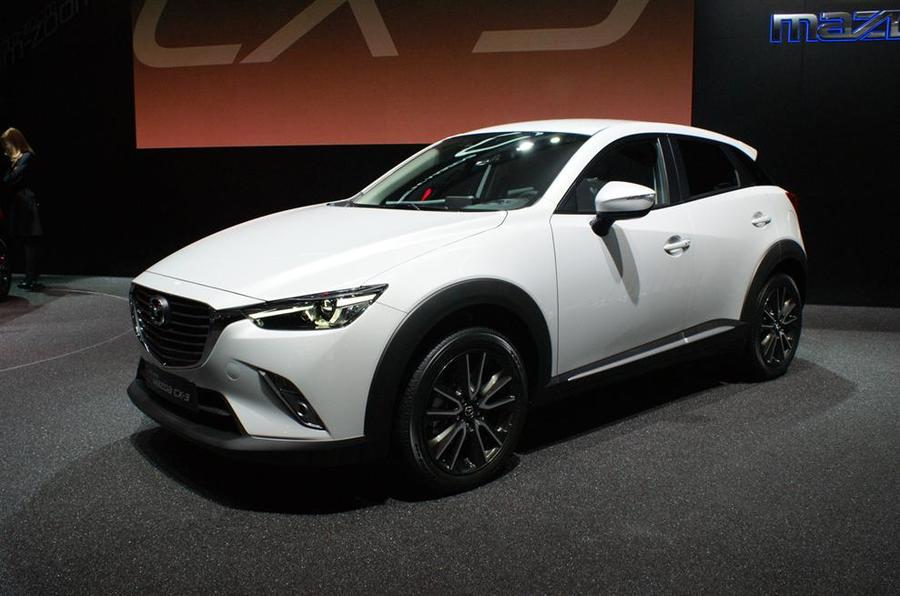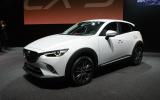Mazda is gunning for the Nissan Juke, Renault Captur and Vauxhall Mokka with the new CX-3 crossover, making its European debut at the Geneva motor show.
The CX-3 draws heavily on the recently launched Mazda 2. It retains many of that car's styling cues, having a similar cabin and using one of its engines. However, unlike the 2 and almost all of the new baby SUV's obvious rivals, it is available with a choice of front-wheel or four-wheel drive.
Read the full Mazda CX-3 review
The new model looks like a natural mix of the latest generation of 2 and its larger stablemate, the CX-5. It features blacked-out C-pillars that are designed to make the roof appear as if it's floating, as well as prominent plastic wheel arch cladding that's more reminiscent of the CX-5. In addition, it gets the 2's prominent front grille, crisp surfacing along its flanks and slim tail-lights.
The CX-3 uses the same basic platform as the Mazda 2, while its 2.57m wheelbase is the same. However, it features 10mm longer front and rear overhangs, a taller front firewall and a 50mm higher driving position. As a result, it is considerably longer (by 21.5cm) and slightly taller (a 5.5cm increase).
The new model also shares 80% of its parts with the new Mazda 2 supermini, a high proportion that shows how sophisticated engineers have become in spinning new variants off humble hatchback platforms. "We have worked hard on commonality, but also making the two versions very different," CX-3 project manager Michio Tomiyama said.
Mazda has carried over the suspension from the Mazda 2, while beefing up the rear twist beam axle and cleverly modifying the lower arms of the supermini’s front struts to give a raised ride height. The conventional, hydraulic power steering is carried over, too, albeit retuned to suit the soft-roader.
A choice of 118bhp or 148bhp 2.0-litre SKYACTIV-G petrol engine is available in the CX-3, while the 1.5-litre 105bhp engine from the 2 is carried over. This engine emits 105g/km of CO2 in 2WD manual guise. The higher-powered petrol engine is available only as a four-wheel-drive manual variant in Sport Nav trim.
Strangely, Mazda will offer the CX-3 with only diesel power in Japan, positioning clean diesel as a competitor to petrol hybrids in the absence of a Mazda petrol hybrid powertrain.
The standard transmission is a six-speed manual, but a six-speed automatic is available with the lower-powered petrol and diesel engines. The four-wheel drive system gets the same torque vectoring technology we've already seen on the CX-5. It's standard on the diesel auto CX-3 and optional on all other models.






























Join the debate
Add your comment
well done
CX-3
They mean it's based on the 3